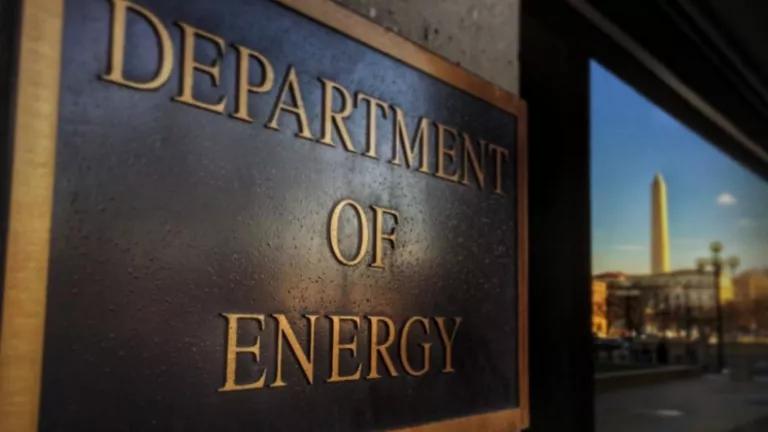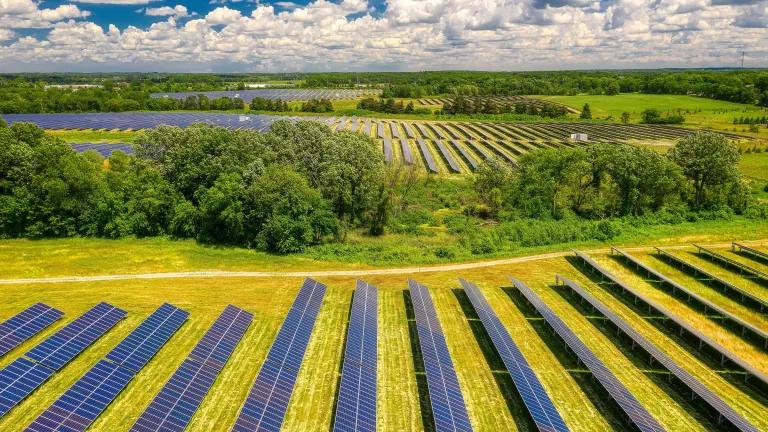“Nothing Is Better than Zero”? Yes, There Is Something.
By combining Zero Net Energy Goals with Strategic Energy Management, we can recognize and promote the achievement of ambitious emissions reductions in industry (and buildings as well).

Figure 1: Steep Declines in Emissions Needed to Meet Paris 1.5 C Goal
Achieving Zero Net Energy (ZNE), which means that a building or an industrial plant produces as much renewable energy onsite as it consumes in a year, is an emerging tool to meet the most ambitious global climate goals. Much of the work to advance ZNE has been in the buildings context but in a new paper presented this week, I tackle ZNE for industry and suggest additional ways to increase ambition, reduce costs, and avert climate pollution through improved energy performance.
Buildings and industrial plants account over two-thirds of climate emissions in most countries. If they comply with ZNE goals, emissions reductions will be much easier. When buildings and industrial plants generate their own energy via wind and solar, for example, that avoids the need for central powerplants to generate electricity to run them—and avoids the climate-warming pollution that comes with that power generation.
The New Buildings Institute (NBI) has noted that to meet the Paris Agreement goal of limiting the increase in global temperatures to 1.5 degrees C, we will need to get the buildings sector to ZNE, or at least close, within a decade or so (see Figure 1).
Translating this goal to a single building can make the structure an attractive choice in real estate markets: it makes efficiency visible. NBI has already recorded almost a thousand certified ZNE buildings in North America alone. And it has found that ZNE doesn’t even raise costs: ZNE buildings often are built at construction costs that are no different than conventional buildings. South Korea will require that all new government buildings achieve ZNE beginning in January 2020.
Does ZNE work as a goal for industry as well? The paper I presented at the American Council for an Energy Efficient Economy’s 2019 Summer Study on industrial efficiency shows how it could work.
My colleague at NBI, Cathy Higgins, created the pun “nothing is better than zero” to focus on the goal of ZNE. Something is better than zero, it turns out. That something is combining the ZNE goal with the concept of continual improvement in energy performance that is the heart of ISO Standard 50001 and its spinoff programs of Strategic Energy Management (SEM).
Combining ZNE with SEM makes sense for another reason as well. SEM is widely discussed and used in industrial energy efficiency, but the system makes as much sense for buildings as it does for industry. And the standards and the literature on ZNE are mostly limited to the buildings sector for no obvious reason. Linking the concepts of ZNE and continual improvement can advance efficiency (and renewables) more effectively in both sectors. We can see from Figure 1 how important that is.
Linking ZNE and SEM
If a facility is already at zero—that is, it produces as much energy as it uses—how can it improve? Of course it can become a net producer of energy, but then it’s hard to distinguish net production from just adding a separate renewable power plant. And it leaves us without a benchmark as to how much better it is. My new paper addresses this issue by assembling even more ambitious goals into a ladder of accomplishment, similar to the silver/gold/platinum levels of certification in the US Green Buildings Council’s LEED program.
Recall that Zero Net Energy means a facility consumes less energy during a year than it produces from renewables. This achievement, as powerful as it is, may not produce net zero emissions of greenhouse gas.
Why? Because the renewable generation at an industrial facility—typically solar—occurs at the same time everyone else in the region is producing solar. And the more solar energy is produced, the more likely we will see excess power generation during certain times of the day or year. Already some renewables-rich areas have to curtail solar and wind generation periodically, and this curtailment will get worse unless we address the intermittency challenge of renewable energy by controlling the timing of energy consumption.
Matching the timing of renewables production with that of energy consumption is a new task we must undertake on the road to meeting global climate pollution limits. To meet this challenge, we need to set stronger Zero Net Energy goals, including Zero Net Emissions. Achieving this goal requires that we find productive and efficient uses for renewables at times of the day when there is lots of sun and not much electricity demand—such as 8 am. We can shift uses to these underutilized times and also rely on stored energy or other management techniques to reduce electricity use after the sun goes down but when stores and offices are still open and people come home and turn on their lights or air conditioners.
We already know many good ways to correct this imbalance of the timing of electricity consumption, such as storage of hot or cold water and battery storage, but a goal of ZNE based on emissions will inspire us to find many more.
What is better than zero net energy then, and how do we get there? A second level of ambition is to target zero net emissions, and we get there by setting a goal of continual improvement in efficiency that is fast enough to get a facility to zero net emissions at a target year in the future. As noted, efficiency improvements include both using less energy overall while still producing the same quality and quantity of product, and also scheduling the timing of the energy consumption that remains to be most compatible with renewable energy generation. This ZNE emissions goal will get less daunting over time even without action by energy consumers, as the electricity grid becomes comprised of more and more renewable energy sources.
After we reach the goal of ZNE emissions in operation, we can address the issue of zeroing out the emissions produced while constructing the facility. Producing common construction materials like concrete, steel, aluminum, and copper requires a lot of energy and generates high levels of greenhouse gas emissions. True zero-emissions buildings will require that we compensate for the energy consumed and emissions produced during construction over the operational life of the plant.
This is the third level of ambition for ZNE—moving beyond simple ZNE (the first level) and ZNE emissions in operation (the second level). A facility that continually improves its energy performance and efficiency could ultimately meet this ambitious goal of ZNE emissions including facility construction. This is why we should incorporate continual improvements in energy performance in the ZNE model.
An even higher level of ambition could include zeroing out transportation energy—the energy and emissions used to get supplies and workers to the plant.
ZNE vs. 100 Percent Renewable Energy
How realistic are ZNE goals? Many large companies already are committing to 100 percent renewable energy. ZNE is in some ways just a restatement of the same thing. But it also offers more flexibility and spurs more creativity to improve performance, and thus more jobs to implement the creative work.
A 100 percent renewables goal can be achieved by writing contracts and signing checks. But ZNE can be achieved by process changes and maintenance improvements that often offer other benefits in terms of productivity and product quality and usually cost less. In my paper, I propose that ZNE, and particularly ZNE emissions, also suggests a commitment to continue to improve energy efficiency and energy/emissions performance. One-off environmental commitments are less transformational than ongoing policies.
Solving the climate problem offers large benefits to individual companies, as well as to society at large. Policies such as ZNE and continual improvement allow companies to strive for and take credit for significant environmental achievements and to satisfy other business goals at the same time. Combining these two ideas helps put us on track to meet the world’s ambitious climate change reduction goals.



